Duerkopp Adler 367 Owner's manual
- Category
- Sewing machines
- Type
- Owner's manual

367
Spezialnähmaschine
Bedienanleitung
Operating Instructions
Instructions de maniement
Postfach 17 03 51, D-33703 Bielefeld • Potsdamer Straße 190, D-33719 Bielefeld
Telefon +49 (0) 5 21/ 9 25-00 • Telefax +49 (0) 5 21/ 9 25 24 35 • www.duerkopp-adler.com
F
GB
D
Ausg./Edition: 12/04 Printed in Federal Republic of Germany Teile-/Part-No.: 0791 367741

Content page:
Preface and general safety instructions
Part 1: Operating Instructions Class 367
1. Product description ............................................ 5
2. Designated use ............................................... 5
3 Subclasses .................................................. 6
4 Optional equipment ............................................ 6
5 Technical data ................................................ 7
6. Operation
6.1 Threading the needle thread ........................................ 9
6.2 Adjusting the needle-thread tension ................................... 11
6.3 Opening the needle-thread tensioner ................................... 11
6.4 Adjusting the thread regulator ....................................... 12
6.5 Winding on the looper thread........................................ 13
6.6 Changing the looper-thread bobbin .................................... 14
6.7 Setting the looper-thread tension ..................................... 15
6.8 Changing the needle ............................................. 16
6.9 Liftingthesewingfoot............................................ 17
6.10 Lockingthesewingfeetintheupposition................................ 18
6.11 Settingthesewing-footpressure ..................................... 18
6.12 Settingthesewing-footstroke....................................... 19
6.13 Setting the stitch length ........................................... 20
6.14 Machine-arm keypad (subclass-170115; -170315; -180115; -180315) ............... 21
7. Direct-current positioning actuator
7.1 General..................................................... 22
7.2 V810 operating panel ............................................ 22
7.2.1 Operating and display elements on the V810 operating panel .................... 22
7.2.2 Key functions on the V810 operating panel ............................... 23
7.2.3 Meaning of symbols on the V810 operating panel ........................... 23
7.2.4 Changing operator-level parameter values ............................... 24
7.2.5 Reducing the maximum rotation speed .................................. 24
7.2.6 Enteringthetechnician-levelcode .................................... 24
7.3 V820 operating panel ............................................ 25
7.3.1 Operating and display elements on the V820 operating panel .................... 25
7.3.2 Key functions on the V820 operating panel ............................... 25
7.3.3 Meaning of symbols on the V820 operating panel ........................... 27

Content page:
7.3.4 Changing operator-level parameter values ............................... 27
7.3.5 Reducing the maximum rotation speed .................................. 28
7.3.6 Fastinformationdisplayandsettingsentry(HIT)............................ 28
7.3.7 Enteringthetechnician-levelcodenumber ............................... 28
7.3.8 Seam programming with the V820 operating panel........................... 28
7.4 EFKAcontrolsparameterlist........................................ 29
7.5 Status and error messages on the V810 and V820 operating panels ................ 30
8. Coupling-positioning actuator
8.1 General..................................................... 31
8.2 Operationofthe6F82FAsewing-drivecontrol ............................. 32
8.2.1 Operatingelementsinthe6F82FAsewing-drivecontrol ....................... 32
8.2.2 Keyfunctionsinthe6F82FAsewing-drivecontrol ........................... 32
8.2.3 Changing operator-level parameter values ............................... 32
8.2.4 Reducing the maximum rotation speed .................................. 33
8.2.5 Enteringthetechnician-levelcodenumber ............................... 33
8.3 6F82FA control operator-level parameter list .............................. 33
8.4 Status and error messages on the V810 and V820 operating panels ................ 33
9. Operation
9.1 Subclass 367-170010; -180010 ...................................... 34
9.2 Subclass -170115; -170315; -180115; -180315 ............................. 35
10. Maintenance
10.1 Cleaning and testing ............................................. 37
10.2 Lubrication ................................................... 39
4

1. Product description
The Dürkopp Adler 367 is a special s ewing machine for first-class
single-needle decorative seams in light to medium-heavy material.
·
It is a single-needle flatbed double-backstitch machine w ith lower
conveyor, needle transport and alternating upper foot conveyor.
·
A safety coupling prevents the shuttle from being displaced or
damaged if the thread jams in the shuttle track.
·
Large horizontal shuttle (bobbin as classes 767, 291, 8967).
·
Automatic wick lubrication with sight-glasses for the oil level.
·
Integral bobbin winder.
2. Designated use
The 367 is a sewing machine designed for sewing light to medium-heavy
material. Such material is generally made of textile fibres, but it may also
be leather. It is used in the clothing industry and for domestic and
motor-vehicle upholstery.
This special sewing machine can also be used to produce so-called
technical seams. In this case, however, the operator must assess the
possible dangers which may arise (with which DÜRKOPP ADLER AG
would be happy to assist), since such applications are on the one hand
relatively unusual and, on the other, so varied that no single set of criteria
can cover them all. The outcome of this assessment may require
appropriate safety measures to be taken.
Generally only dry material may be sewn with this machine. The
material may be no thicker than 10 mm when compressed by the
lowered sewing feet. The material may not contain any hard objects,
since if it does the machine may not be operated without an
eye-protection device. No such device is currently available.
The seam is generally produced with textile-fibre sewing thread of gauge
up to 15/3 NeB (cotton), 20/3 Nm (synthetic) or 25/4 Nm (covering yarn).
Before using any other thread the possible dangers arising must be
assessed and appropriate safety measures taken if necessary.
This special sewing machine may be set up and operated only in dry,
well-maintained premises. If the sewing machine is used in premises which
are not dry and well-maintained it may be necessary to take further
precautions (which should be agreed in advance - see EN 60204-31:1999).
As manufacturers of industrial sewing machines we proceed on the
assumption that personnel who work on our products will have
received training at least sufficient to acquaint them with all normal
operations and with any hazards that these may involve.
5

3. Subclasses
367-170010: single-needle flatbed-double-backstitch machine
with lower conveyor, needle transport and
alternating upper foot conveyor.
Needle thickness 100-150.
367-170115: like class 367-170010, but with
electromagnetic thread cutter,
electro-pneumatic bar-tacking and sewing-foot
lift. Needle thickness 100-150.
367-170315: like class 367-170115, but with electro-pneumatic
quick stroke adjustment, 2nd stitch-length
and 2nd thread tension. Pneumatic
residual-thread reduction to approx. 8 mm
after thread trimming.
Needle thickness 100-150.
367-180010: single-needle flatbed-double-backstitch machine
with lower conveyor, needle transport and
alternating upper foot conveyor.
Needle thickness 130-180.
367-180115: like class 367-180010, but with
electromagnetic thread cutter,
electro-pneumatic bar-tacking and sewing-foot
lift. Needle thickness 130-180.
367-180315: like class 367-180115, but with electro-pneumatic
quick stroke adjustment, 2nd stitch-length
and 2nd thread tension. Pneumatic
residual-thread reduction to approx. 8 mm
after thread trimming.
Needle thickness 130-180.
4. Optional equipment
Item no. Optional equipment
9780 000108 WE-8 maintenance unit
For pneumatic optional equipment
9822 510001 Sewing lamp (halogen) with 12V/20W bulb, fits on the upper part
of the machine
0907 487519 Sewing-lamp attachment set for 9822 510001
0798 500088 Sewing-light transformer
For 230V, with mains cable, without switch,
for sewing lamps 9822 510001 and 9822 510129
0797 003031 Pneumatic connection pack
9400 367001 Service set
9880 002001 Knee switch for automatic bartacking (Cl. 367-170115; 367-180115)
6

5. Technical data
Noise Workplace-related emission value in accordance with DIN 45635-48-A-1-KL2
Class 367-170010; -180010 LC = 82 dB (A)
367-170115; -180115
367-170315; -180315 Stitch length: 6,4 mm
Altern. sewing feet stroke.: 1,5 mm
Stitch rate: 2.800 rpm
Material: G1 DIN 23328 4-ply
Class 367-170010; -180010 LC = 82 dB (A)
367-170115; -180115
367-170315; -180315 Stitch length: 6,4 mm
Altern. sewing feet stroke.: 5,6 mm
Stitch rate: 2.800 rpm
Material: 2-ply Skai 1,6 mm 900g/m
2
DIN 53352
Stitch type
double-backstitch
Needle system:
134-35
Class 367 Subclass
-170010 -180010
-170115 -180115
-170315 -180315
Needle thickness (depending on E no.:) max. [Nm]
150 180
Max. sewing-thread thicknesses: [Nm]
15/3 10/3
Max. sewing-foot stroke: Stitch length range
Max. Stitch rate: [min
-1
]
*)
-170010 -170115 -170315
-180010 -180115 -180315
1-3mm
3-5mm
5-6,5mm 0-6mm
6,5-8mm
*) 9 mm
2800 3000 3000
2300 2300 2300
2000 2000 2000
1800 1800 1800
- - 1800
1-6,5mm
6,5-8mm 6-8mm
*) 9 mm
2000 2000 2000
1800 1800 1800
- - 1800
Max. clearance under sewing feet:
- sewing [mm]
- raised [mm]
10
20
Operating pressure: [bar]
6
Air consumption per working cycle: ca. [Nl]
0.7
Rated voltage:
depends on the drive fitted
Dimensions (H x W x D) [mm]
630 x 220 x 420
Working height (Factory settings): [mm]
790
7

Notes:
8

6. Operation
6.1 Threading the needle thread
Caution: danger of injury
Turn off the main switch.
The needle thread may only be threaded with the sewing machine
switched off.
–
Place the yarn reels on the reel stand and pass the needle and
looper threads through the unwinding arms.
Unwinding arm 1 must be vertically above the yarn reels.
–
Thread the needle thread as shown in the following illustration.
9
1

Fig. A: Correct thread loop in the centre of the
material
Fig. B: Needle-thread tension too low
or
Looper-thread tension too high
Fig. C: Needle-thread tension too high
or
Looper-thread tension too low
10
1 43
5
2

6.2 Adjusting the needle-thread tension
Pre-tensioner
When the main tensioner 4 and supplementary tensioner 5 are open
(e.g. when the sewing feet are raised) the needle thread must be
under slight residual tension. This residual tension is produced by the
pre-tensioner 2.
The pre-tensioner 2 simultaneously affects the length of the end of the
severed needle thread (the starting thread for the next seam).
–
Basic setting:
Turn knurled nut 2 until its front is flush with the bolt 1.
–
To shorten the starting thread:
Turn knurled nut 2 clockwise.
–
To lengthen the starting thread:
Turn knurled nut 2 anticlockwise.
Main tensioner
The main tensioner 4 should be set to the minimum possible tension.
The looping of the threads must be in the c entre of the material.
With thin material excessive thread tension can cause unwanted
gathering and thread breakage.
–
Adjust the main tensioner 4 so that the stitches are uniform.
To increase tension - turn the knurled nut clockwise
To decrease tension - turn the knurled nut anti-clockwise
Supplementary tensioner
The supplementary tensioner 5 can be switched in to effect a rapid
change in needle-thread tension during operation (e.g. with thickened
seams).
–
Set the supplementary tensioner 5 lower than the main tensioner 4.
–
The supplementary tensioner 5 is switched on and off with the lever 3.
Lever 3 turned to the left = supplementary tensioner is switched
off.
Lever 3 turned to the right = supplementary tensioner is switched
on.
6.3 Opening the needle-thread tensioner
Subclass -170010; -180010
When the sewing feet are raised the main and supplementary
tensioners are also opened automatically.
Subclass -170115; -180115
The needle-thread tensioner is automatically opened when the thread
is severed.
Hint !
(subclass -170115; -180115 only)
The time when the thread-tensioner is opened can be set with
parameters F-191 and F-192 (technician level).
11

6.4 Adjusting the thread regulator
Caution: danger of injury
Turn off the main switch.
The thread regulator may only be adjusted with the sewing machine
switched off.
The thread regulator 3 controls the quantity of needle thread required
for stitch formation.
The thread regulator must be precisely adjusted for an optimum result.
The thread-regulator setting depends on the following factors:
–
Stitch length
–
Material thickness
–
Characteristics of the sewing yarn in use.
At the correct setting the needle-thread loop must slide at low tension
over the thickest point of the shuttle.
–
Undo screws 1 and 2.
–
Adjust the thread regulator 3.
–
Tighten screws 1 and 2.
Adjustment hint:
If the maximum quantity of thread is required the thread-tensioning
spring 4 must be pulled upwards about 0.5 mm from its lower limit
position. This is the case when the needle-thread loop passes the
maximum shuttle diameter.
Adjusting the thread regulator
–
Undo screws 1 and 2.
–
Move the thread regulator 3:
to the left for more thread,
to the left for less thread.
–
Tighten screws 1 and 2.
12
1
23
4

6.5 Winding on the looper thread
–
Pull the thread through the guide 3 and the tensioner 4.
–
Place the thread behind the blade 5 and sever it.
–
Fit the bobbin 1 onto the bobbin winder.
Hint
There is no need to wind the thread onto the bobbin by hand.
–
Press the bobbin-winder lever 2 into the bobbin.
–
Sewing
The bobbin-winder lever terminates the process as soon as the
bobbin is full.
The bobbin winder always stops in such a position that the blade 5
is in the insertion position (see r ight-hand illustration).
–
Remove the full bobbin 1, place the thread behind the blade 5 and
sever it.
–
Fit empty bobbin onto the bobbin winder for the next winding
process and press the bobbin-winder lever 2 into the bobbin.
CAUTION !
If the thread is not to be wound on during sewing, it is essential
for the sewing foot to be locked in the raised position and the
sewing-foot stroke set to the smallest value.
13
5
4321

6.6 Changing the looper-thread bobbin
Caution: danger of injury
Turn off the main switch.
The looper-thread bobbin may only be changed with the machine
switched off.
Removing the empty bobbin
–
Raise the needle bar.
–
Lift the bobbin-housing flap 1.
–
Extract the upper part of the bobbin housing 2 together with the
bobbin 6.
–
Remove the empty bobbin from the upper part of the bobbin
housing 2.
Inserting the full bobbin
–
Insert the full bobbin in the upper part of the bobbin housing 2.
Check the bobbin’s direction of rotation.
This is correct if the bobbin rotates in the opposite direction to that
in which the thread is drawn off.
–
Pull the looper thread through the slit 4, under the tension spring 3
and into the hole 5.
–
Pull about 5 cm of looper thread out of the bobbin housing 2.
When the thread is drawn off the bobbin must turn in the direction
of the arrow.
–
Replace the bobbin housing 2.
–
Close the bobbin-housing flap 1.
Danger of breakage !
Press firmly on the bobbin housing and make sure it is properly locked
into position.
14
1
1
3
6
2
5
4

6.7 Pre-setting the looper-thread tension
Caution: danger of injury
Turn off the main switch.
The looper-thread tension may only be adjusted with the machine
switched off.
Braking spring
The braking spring 1 prevents the bobbin from running on when the
machine halts and when the looper thread is severed and cannot be
adjusted!
Setting the tension spring
–
When the bobbin is full the top of the bobbin housing 2 should
gradually descend under its own weight (see right-hand
illustration).
–
Adjust the tension spring 4 with the regulating screw 3 until the
required tension is reached.
15
1
2
4
3

6.8 Changing the needle
Caution: danger of injury
Turn off the main switch.
The needle may only be changed with the sewing machine switched off.
–
Undo screw 2.
–
Push the new needle as far as it will go into the hole in the needle
bar 1.
CAUTION !
The throat 3 of the needle must face towards the shuttle tip.
–
Tighten screw 2.
CAUTION !
After changing to a needle of a different thickness the distance
between the shuttle and the needle must be corrected (see servicing
instructions).
Failure to carry out this adjustment may lead to the following errors:
–
Changing to a thinner needle:
- faulty stitches
- damage to thread
–
Changing to a thicker needle:
- damage to the shuttle tip and needle
16
1
3
2

6.9 Lifting the sewing foot
Subclass -170010; -180010
The sewing foot can be raised mechanically by operating the knee
lever 1.
Subclass -170115; -180115
The sewing foot can be raised electro-pneumatically by operating the
foot pedal 2 or the knee lever 1.
Raising the sew ing foot mechanically (knee lever)
–
To adjust the position of the material (e.g. for corrective purposes),
push the knee lever 1 to the r ight or press the pedal 2 half-way
back.
The sewing foot stays in the up position as long as pressure is
maintained on the knee lever 1.
Raising the sew ing foot electro-pneumatically (pedal)
–
Press the pedal 2 half-way back.
The sewing feet are raised with the machine at a halt.
–
Press the pedal 2 all the way back.
The thread is severed and the sewing foot raised.
17
1
2

6.10 Locking the sewing feet in the up position
Once they have been mechanically or pneumatically raised the sewing
feet can be locked in the up position with button 1 (e.g. to wind on the
looper thread).
–
With the machine at a standstill press the knee lever to the right or
push the pedal half-way back.
The sewing feet are raised.
–
Press button 1 and release the knee lever or pedal.
The raised sewing feet are locked in the up position.
–
Operate the knee lever or push the pedal half-way back once
again.
The sewing feet are no longer locked.
6.11 Setting the sewing-foot pressure
The required sewing-foot pressure is set with the knurled screw 2.
CAUTION !
The material must not “swim”.
Do not set a higher pressure than is necessary.
–
To increase the sewing-foot pressure = turn screw 2 clockwise.
–
To decrease the sewing-foot pressure = turn screw 2 anti-clockwise.
18
2
1

6.12 Setting the sewing-foot stroke
CAUTION !
Subclass -170010; -180010 has no automatic speed restriction.
It is essential to reduce the speed when working w ith a large
sewing-foot stroke (see the plaque on the sewing-foot-stroke lever).
Excessive speed makes sewing noticeably noisy and causes damage
to the machine.
The required sewing-foot-stroke height is adjusted w ith the
sewing-foot-stroke lever 5.
If you have to sew with a s ewing foot stroke larger than 5 mm, the
slide 6 must be shifted to the right.
With the slide 6 actuated, sewn may only be done w ith reduced
speed.
The knurled nuts 3 and 4 integral to the sewing-foot-stroke lever can
be used to set stop screws for the minimum and maximum sewing-foot
stroke.
–
Sewing-foot-stroke lever fully up = minimum sewing-foot-stroke
height.
–
Sewing-foot-stroke lever fully down = maximum s ewing-foot-stroke
height.
19
5
436

6.13 Setting the stitch length
Subclass -170010; -180010
The required forwards-stitch length is set with the knurled nut 1 in the
manual stitch-setting lever 2.
The required backwards-stitch length is set with the knurled nut 3 in
the manual stitch-setting lever 2.
Changing stitch length during sewing:
The stitch length can be infinitely varied during sewing with the manual
stitch-setting lever 2, within the limits of the stitch lengths set for
forwards and backwards sewing.
–
Fully raise the manual stitch-setting lever
to sew forwards with the stitch length set.
–
Fully lower the manual stitch-setting lever
to sew backwards with the stitch length set.
Subclass -170115; -180115
The required stitch length is s et with adjustment wheel 4.
It has the same value for both forward and backward sewing.
Changing the stitch length while sewing:
The stitch length can be infinitely varied during sewing with the
adjustment wheel 4.
–
Turn the adjustment wheel fully to the right for minimum stitch
length.
–
Turn the adjustment wheel fully to the left for maximum stitch
length.
20
321
4

6.14 Machine-arm keypad (subclass -170115; -170315; 180115; 180315
*)
)
LED Key Function
2
Position the needle in the up or down position.
The function of key 2 can be determined with the F-140 parameter.
1 = needle up, 2 = needle up/down, 3 = single stitch
4 = single stitch with 2nd stitch length / short stitch
5 = needle up if out of position 2.
The factory setting is 1 = needle up.
1
Manual backwards sewing.
The machine sews backwards while key 1 is held down.
3
Trigger or suppress starting or ending bar tack.
If starting or ending bar tacks are generally switched on, pressing this key
switches the next one off.
If starting or ending bar tacks are generally switched off, pressing this key
switches the next one on.
4
*)
2nd Stitch length
5
*)
2nd Thread length
6
LED display “mains on”
7
LED display: no function
8
LED display for key 3
9
*)
LED display on = 1st (upper) Stitch length active
LED display off = 2nd (lower) Stitch length active
10
*)
LED display on = 2nd Thread tension active
LED display off = 2nd Thread tension off
21
6789
*)
10
*)
123 4
*)
5
*)
Page is loading ...
Page is loading ...
Page is loading ...
Page is loading ...
Page is loading ...
Page is loading ...
Page is loading ...
Page is loading ...
Page is loading ...
Page is loading ...
Page is loading ...
Page is loading ...
Page is loading ...
Page is loading ...
Page is loading ...
Page is loading ...
Page is loading ...
Page is loading ...
Page is loading ...
-
 1
1
-
 2
2
-
 3
3
-
 4
4
-
 5
5
-
 6
6
-
 7
7
-
 8
8
-
 9
9
-
 10
10
-
 11
11
-
 12
12
-
 13
13
-
 14
14
-
 15
15
-
 16
16
-
 17
17
-
 18
18
-
 19
19
-
 20
20
-
 21
21
-
 22
22
-
 23
23
-
 24
24
-
 25
25
-
 26
26
-
 27
27
-
 28
28
-
 29
29
-
 30
30
-
 31
31
-
 32
32
-
 33
33
-
 34
34
-
 35
35
-
 36
36
-
 37
37
-
 38
38
-
 39
39
Duerkopp Adler 367 Owner's manual
- Category
- Sewing machines
- Type
- Owner's manual
Ask a question and I''ll find the answer in the document
Finding information in a document is now easier with AI
Related papers
-
 Duerkopp Adler 291 Operating instructions
Duerkopp Adler 291 Operating instructions
-
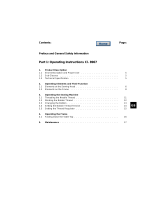 Duerkopp Adler 8967 Operating instructions
Duerkopp Adler 8967 Operating instructions
-
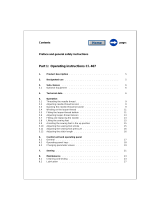 Duerkopp Adler 467-180 Operating instructions
Duerkopp Adler 467-180 Operating instructions
-
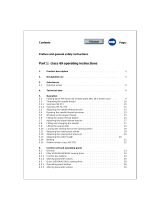 Duerkopp Adler 69_valid_till_october_2019 Owner's manual
Duerkopp Adler 69_valid_till_october_2019 Owner's manual
-
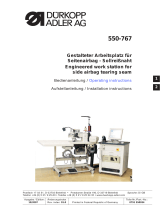 Duerkopp Adler 550-767 Owner's manual
Duerkopp Adler 550-767 Owner's manual
-
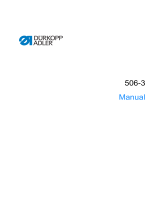 Duerkopp Adler 506-3 Operating instructions
Duerkopp Adler 506-3 Operating instructions
-
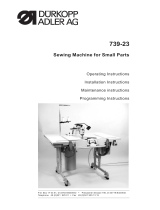 Duerkopp Adler 739 Owner's manual
Duerkopp Adler 739 Owner's manual
-
 Duerkopp Adler 69_valid_till_october_2019 Installation guide
Duerkopp Adler 69_valid_till_october_2019 Installation guide
-
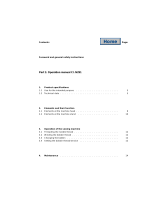 Duerkopp Adler N291 Operating instructions
Duerkopp Adler N291 Operating instructions
-
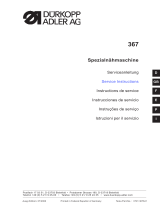 Duerkopp Adler H868 User manual
Duerkopp Adler H868 User manual
Other documents
-
DURKOPP ADLER 367 Installation guide
-
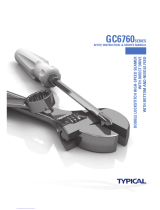 typical GC6760 SERIES Setup, Instruction & Service Manual
typical GC6760 SERIES Setup, Instruction & Service Manual
-
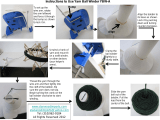 Stanwood Needlecraft YBW-A User guide
Stanwood Needlecraft YBW-A User guide
-
DURKOPP ADLER 367 Service Instructions Manual
-
DURKOPP ADLER 506-2 Program
-
DURKOPP ADLER 4280i Manual Motor
-
DURKOPP ADLER 4181i Manual Motor
-
DURKOPP ADLER 1280i Manual Motor
-
DURKOPP ADLER 1183i Manual Motor
-
DURKOPP ADLER 4182i User manual


















































